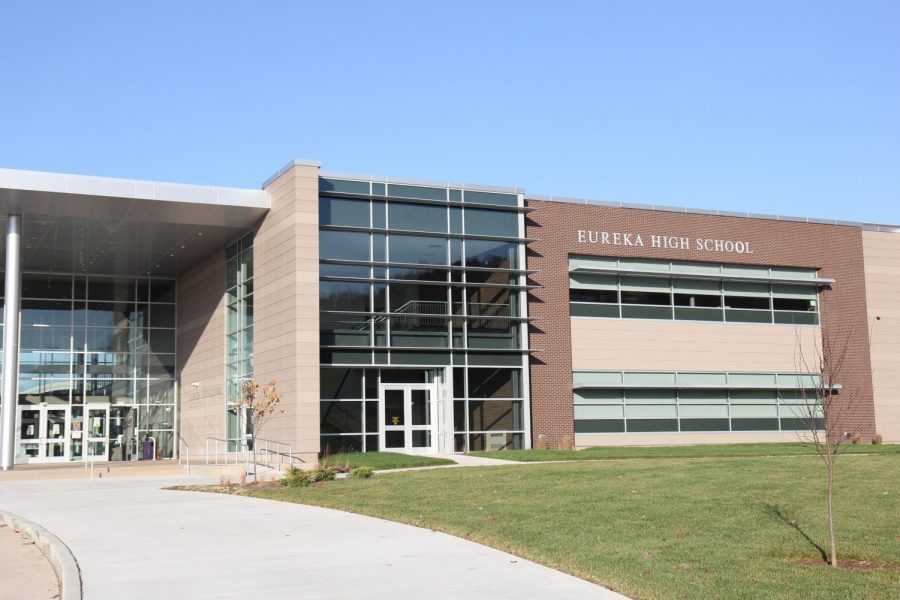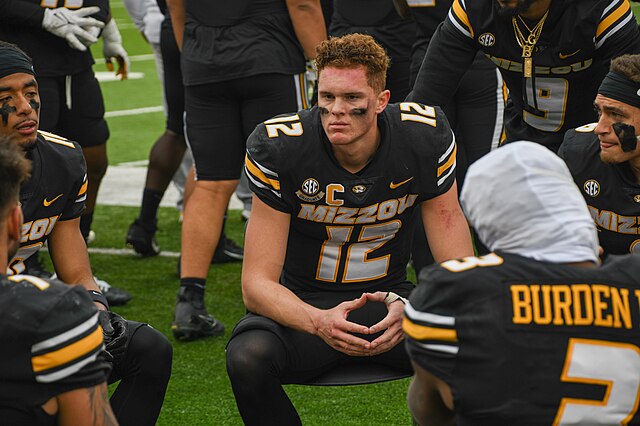Turf talk
Four perspectives on turf fields
The EHS main field takes more rain, causing unplayable conditions, Nov. 4.
November 19, 2014
With schools such as Bayless, Clayton, Mehlville, Northwest, Oakville and all of Parkway School District having turf fields, RSD is left to decide on the importance of turf fields and the benefits they could provide.
Athleticism
There is no definitive advantage, athletically, to having turf fields as opposed to grass fields.
“Having turf does not guarantee great conditions,” Mr. Gary Schneider, head soccer coach, said. “A wet turf can be just as slippery as a wet grass.”
Cameron Nisbet, varsity wide receiver, prefers turf.
“You feel light on turf,” Nisbet said. “When I’m on turf I feel light and bouncy and fast.”
The EHS main field is typically not much more than a patch of dirt in the spring, causing a challenge for the girls soccer team.
This lack of grass changes how the field plays.
“Our field is dirt in the spring,” Brittney Robinson, varsity defense, said. “We play better on turf because we don’t have to worry about the ball bouncing straight up off of a dirt hill.”
An obvious advantage to turf is the dependability that it provides; an even surface with no divets, mud or bald patches.
Financial
The financial aspect of turf fields is a complicated issue with no definitive answers.
“When schools started getting turf, I think it was seen as a luxury,” Dr. Eric Knost, superintendent, said. “People eventually realized the financial benefits that turf fields have.”
Taking into account the costs that turf fields would eliminate or drastically decrease like mowing, seeding, irrigation repairs, water consumption, aerating, painting, fertilizing, pesticides and game relocation the estimated savings for the district would be about $82,000 a year.
Clayton High School installed their field in 2005 and Mehlvile and Oakville installed their fields in 2007.
Another financial advantage to turf fields would be the added profit that would be assumed due to field rental.
“We may have a situation where teams would want to come to us,” Mr. Chris Freund, facilities coordinator, said. “There are a lot of benefits that are tough to put a number on.”
However, the cost for RSD to install turf at all four high schools would be about $3.3 million, according to Mr. Tim Rooney, chief financial and legislative officer.
The estimated price to have the fields installed is about $675,000, but Lafayette, Marquette and Rockwood Summit’s fields would cost around $200,000 more than at EHS because they fall under the Metro Sewer District’s (MSD) jurisdiction, according to Mr. Chris Freund, facilities coordinator.
“Things like asphalt parking lots and turf fields are considered impermeable by MSD,”Mr. Freund said. “We have to account for the water runoff caused by the fields, which would add that additional cost.”
In 2006 Rockwood had a bond issue for turf, however it was voted down because many voters viewed it as extravagant and unnecessary, according to Mr. Rooney.
“There is still a negative undertone about turf with some in the community,” Mr. Rooney said. “We need to somehow explain to them the benefits of turf.”
However, not getting turf eight years ago could be a blessing in disguise for Rockwood.
“There is a drawback in that we are falling behind other schools a bit,” Mr. Freund said. “However, now we will have plenty of information to make an informed decision.”
Another financial obstacle is finding a way to get the $3.3 million necessary to finance the fields, according to Mr. Freund.
“There have been parents that have started committees for fundraising,” Mr. Rooney said. “Fundraising of this size might not be the appropriate mechanism for that.”
Rockwood could also put the issue back in a bond issue which, after the public votes on and approves the topic, means investors would buy bonds to pay for the fields and Rockwood would start a Debt Service Fund to pay back the investors, according to Mr. Rooney.
Also, with the current 68 cent tax rate, taxes would not have to be raised to account for the debt.
Another option is lease-purchase debt, meaning that Rockwood would borrow money and pay back the debt with their annual savings.
“We would need to find more savings.” Mr. Rooney said. “I think lease-purchase payments are something like $375,000 a year.”
Possibly the largest challenge in getting turf fields will be the obstacles that arise due to financial stipulations.
Health
Turf fields bring with them a set of challenges on the injury and health front.
These types of fields are known to cause more muscle strains and spasms because of the solidity of the surface.
“In my own opinion, athletes get hurt more on turf fields,” Mr. Charlie Weir, athletic trainer, said. “Since the turf field is harder, athletes might get hurt on a play on turf that wouldn’t hurt them on a grass field.”
Another potential health hazard is the heat retention of turf fields.
“The turf fields get much hotter than grass fields,” Mr. Weir said. “Athletes would easily get dehydrated. They could get cramps and possibly get heat exhausted.”
According to a study done at the University of Missouri Columbia, on a 98-degree day the temperature of the turf field was recorded at 173 degrees, while a grass field in the area registered at 105 degrees.
“That’s one of the things that would make me not want us to get a turf field,” Nisbet said. “Over the summer, I played in this league that practiced on turf and we were burning up.”
Grass, unlike artificial turf, is self-cleansing. If an athlete bleeds on, sweats on, spits on or gets any extra bacteria onto a turf field, then bacteria will grow unheeded without proper cleaning.
“That’s [the possibility of bacteria] pretty nasty,” Justin Armfield, varsity soccer forward, said. “I’d try to focus on the game, but that’s really gross.”
Practicality
In 2014, EHS has been forced to move events because the grass field was incapable of holding the event.
“It’s really inconvenient,” Robinson said. “We don’t always know right away if the game is moved. It can cause problems for parents that want to go to the game.”
This fall sports season, the weather was so inclement that EHS was forced to move one of the most important football games of the year.
“This year we had to move our homecoming game,” Nisbet said. “I would’ve rather had it here because we missed the fans and the added intensity.”
Turf fields take away the need for games to be moved or cancelled on a regular basis.
“Turf fields are so practical,” Dr. Jason Green, athletic director, said. “It eliminates change of venue, you don’t have to cancel or move as many games.”
The implications involved in changing the site of a game puts a lot of stress on a lot of people.
“The biggest thing is communication,” Dr. Green said. “You have to communicate with our team, the other team, the officials, parents, the community, concessions, security among other things.”
Occasionally, there is payment that the school must make to the place that has agreed to host the sporting event, but usually it means paying the people at the new venue that EHS would not otherwise have had to pay, according to Dr. Green.
“We’ve been fortunate in the last few years,” Dr. Green said. “Sometimes we have to pay and other times we don’t.”
The main purpose of the stadium field at EHS is for football games of Friday nights, sprinkled in with the occasional soccer game in the fall and girls soccer in the spring.
Mr. Farrell Shelton, head coach, declined to comment on this story after being contacted.
“There are about two acres in the middle of the Eureka campus that go unused for a lot of time in the year,” Mr. Freund said. “A big benefit of turf fields is usability.”
A turf field would allow for classes and all students to utilize the field all the time.
“Instead of being used about 30 times a year,” Dr. Green said. “It becomes a classroom seven hours a day.”
The lacking use of the field, in its current state, is inefficient and a cause for concern.
“I’m a fan of turf fields,” Dr. Knost said. “It’s a more efficient and effective use of property.”















